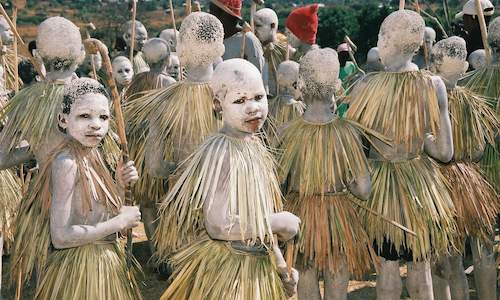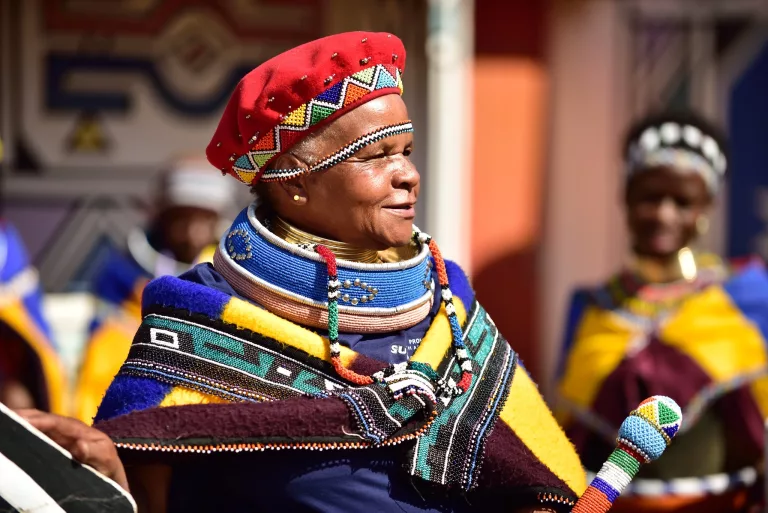How South African Culture Today can Save You Time, Stress, and Money.
How South African Culture Today can Save You Time, Stress, and Money.
Blog Article
The Greatest Guide To South African Culture Today
Table of ContentsSouth African Culture Today Fundamentals ExplainedNot known Details About South African Culture Today The Best Strategy To Use For South African Culture TodayNot known Factual Statements About South African Culture Today The Best Strategy To Use For South African Culture TodaySouth African Culture Today Fundamentals Explained
This follows with singing and drum pounding. The bride-to-be and bridegroom after that consult with the senior citizens and chat about the importance of their union. A matter of importance in Zambian villages is the passing away of loved ones. All members of the village put money, effort and time together for the interment of the deceased.Songs and dancing is an extremely essential aspect of the Zambian society. The numerous tribal devices have their own dance forms; nevertheless, makishi is typical among all people.
South African Culture Today Things To Know Before You Buy
When it involves music, drums are utilized the most, with a range of drumming events. In Zambia, bulk of the people are Christian; Protestant and Roman Catholic. There are little teams of Muslims and Hindus, with the rest following regional indigenous tribal ideas.

South African heritage and society is tremendously diverse, and contains several groups of people that each have their very own traditions and ideas. Having such a variety of people and cultures is what makes South Africa so one-of-a-kind. In real sense of the expression, we are a rainbow country.
South Africa has roughly three hundred thousand Portuguese individuals staying in it. Making it the 7th on the listing of nations with one of the most Portuguese people in it outside of Portugal. Portuguese is not just a society, but it is additionally a language and a race. Portuguese people stem from the nation of Portugal in Europe, nonetheless, as a result of Portugal (like lots of various other countries in Europe) discovering the world and conquering various other countries throughout the 15th 20th centuries, South Africa has what we call Portuguese South African's living in it.
The Best Strategy To Use For South African Culture Today
Among the noticeable attributes of the topography is a plateau that covers almost two thirds of the center of the country. The plateau complicated climbs towards the southeast, where it culminates in the Drakensberg range, part of an escarpment that divides the plateau from the coastal areas. The Drakensburg consists of Champagne Castle, the greatest top in the country.
The area north of the Witwatersrand, called the bushveld, inclines downward from east to west toward the Limpopo River, which creates the international border. The western section of the plateau, the middleveld, likewise descends towards the west and varies in elevation between the highveld and bushveld. Between the Drakensburg and the eastern and southern coastline, the land descends to the sea.
Nearer the coastline there is a low-lying plain called the eastern lowveld. Southwest of the plateau the nation becomes progressively extra dry, paving the way to the stony desert of the Great Karroo, surrounded on the east by the lower, better watered plateau of the Little Karroo. Dividing the completely dry southern interior from the sandy littoral of the southern coastline and West Cape is another array, the Langeberg.
Everything about South African Culture Today
The country's racially, ethnically, and politically separated history has actually generated nationwide and subnational signs that still operate as signs of the nation, and others icons that are approved only by certain teams. The monuments to white settler occupation and political supremacy, such as the Afrikaner Voortrekker ("leader") Monument in Pretoria and the Rhodes Monolith honoring the British colonial realm home South African culture today builder and Cape prime minister Cecil Rhodes, continue to be sectarian signs.
The initial contemporary inhabitants were the San ("bushman") hunter-gatherers and the Khoi ("Hottentot") individuals, who rounded up livestock (South African culture today). The San might have been present for hundreds of years and left evidence of their visibility in countless old cave paints ("rock art"). Bantu-speaking clans that were the ancestors of the Nguni (today's amaZulu, amaXhosa, amaSwazi, and vaTsonga peoples) and Tswana-Sotho language teams (today's Batswana and Southern and Northern Basotho) migrated down from eastern Africa as early as the fifteenth century

Both former republics of the Orange Free State and Transvaal (South African Republic) were established by Afrikaner settlers who defeated and dispossessed the Basotho and Batswana. Lesotho would have been forcibly integrated into the Orange Free State without the extension of British security in 1869. The utmost unification of the country arised from the South African Battle (18991902) in between the British and both Afrikaner republics, which lowered the nation to destroy at the beginning of the twentieth century.
Afrikaners historically considered themselves the just real South Africans and, while giving full citizenship to all locals of European descent, denied that status to individuals of shade up until the democratic transition of 1994. British South Africans keep a sense of social and social link to Great Britain without deteriorating their identification as South Africans.
Not known Incorrect Statements About South African Culture Today
The diversity and fragmentation within ethnic groups and the balance of stress in between those groups throughout the twentieth century avoided interethnic civil conflict. While intergroup stress over resources, privileges, and political dominance stay, those conflicts are as most likely to pit Zulu versus Zulu as Zulu against Xhosa or African versus Afrikaner.
From colonial India, British merchants and managers brought the curved steel ornamental roofings and slender shoelace work columns that still symbolize the verandas of homes arounds and cities throughout the country. Houses of praise add a crucial architectural element even in the tiniest towns. Along with the soaring steeples and traditional stonework of Afrikaans Dutch Reformed churches, Anglican churches, synagogues, mosques, and Hindu temples give range to the spiritual architectural scene.

Slaughtering and the brewing of standard grain beer are necessary in safeguarding the engagement and goodwill of the ancestors that are considered the guardians this website of good fortune, success, and health. Indian neighborhoods preserve their indigenous culinary traditions and use them on Islamic and Hindu routine and ceremonial events. Afrikaners and Coloured people collect at weekends and unique celebrations at multifamily barbeques called braais, where neighborhood bonds are enhanced.
Because this browse around this web-site was the key economic business of both black Africans and white colonists, conflict between those teams focused on the possession of grazing land and animals. In 1867, the largest ruby deposits in the globe were uncovered at Kimberley in the west central area. The riches from those fields assisted finance the exploitation of the best gold coral reef on the planet, which was discovered on the Witwatersrand in 1886.
How South African Culture Today can Save You Time, Stress, and Money.
This resulted in misconceptions and calculated misrepresentation in the ventures of white settlers and federal government officials with African principals throughout the colonial period (South African culture today). In the facility of African books, some elements of common and chiefly "tribal depend on" land period were preserved, and even in white backwoods, forms of common tenure were still exercised in areas with African neighborhoods
After the autonomous change of 1994, programs for land restitution, redistribution, and reform were set up, yet development has actually been slow-moving. The white minority still controls eighty percent of the land. Following farming land invasions in Zimbabwe, the Department of Land Affairs has actually vowed to speed land redistribution.
Report this page